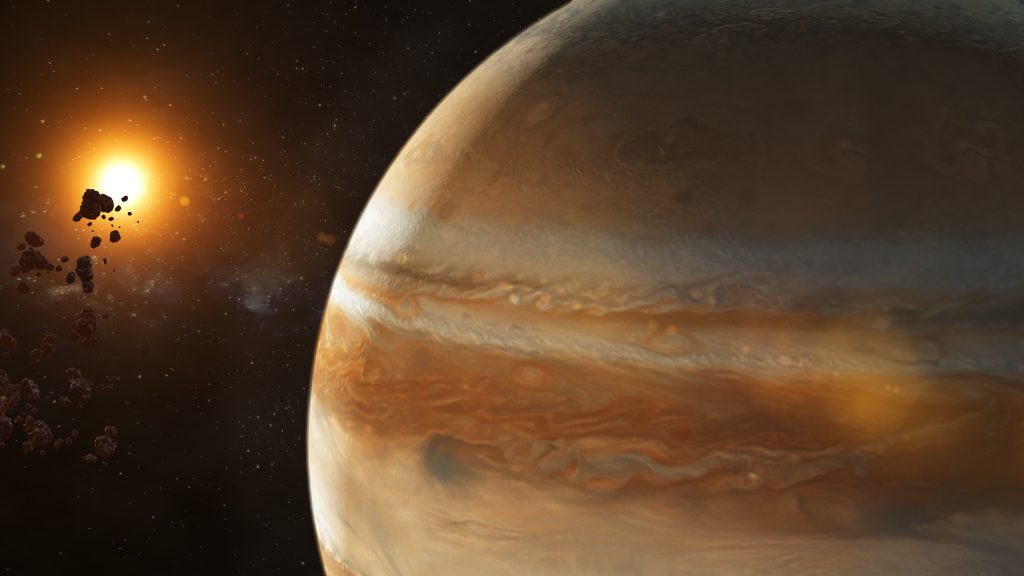What’s under Jupiter’s colorful clouds? Here’s a cool simulation of what you would see if you could take a spacecraft inside the largest planet in the solar system
Jupiter is The largest and oldest The most mysterious planet in the solar system. It is so large that it can fit inside Three hundred lands. They are believed to play a vital role in protecting our planet from potentially dangerous comets. It is mainly composed Of hydrogen and heliumWith the addition of other chemical compounds such as methane, ammonia and water, which contributed to the formation of a distinctive striped atmosphere. Scientists have long wondered what might lie beneath Jupiter’s thick blanket of clouds. It was the Juno probe that provided us with the most detailed information, but there are still many secrets to be revealed regarding this gas giant. So let’s try to imagine what it would be like to dive inside Jupiter. Watch the video Then we attach them together.
What is hidden beneath the clouds of this gas giant
Suppose you are equipped with spacesuits that protect you from Jupiter’s destructive environment. First your ship will fall from a height Ammonia clouds At about 0.5 atmospheres. Gravity will be so strong that you will fall 2.25 times faster than you would on Earth. Sunlight will still be visible, however It won’t warm you Because it is incredibly cold on Jupiter (-150°C).
Brown clouds on Jupiter
The next step is the brown clouds consisting of Ammonium hydrosulfide Ammonium sulfide starts at about 2 atmospheres of pressure. The closer we get to them, the less sunlight there will be, but somewhat surprisingly, the temperature will rise due to the increased pressure. The further down you go, the darker everything becomes. Huge lightning would illuminate the environment, with huge ice clouds and a pressure of about 10 atmospheres. Here the temperature will reach 20 degrees Celsius. Once above these ice clouds, the temperature rises dramatically Until it exceeds 200 degrees Celsius.
Mineral zone of the planet
After a long period of wandering, the atmosphere becomes more intense and one enters In the mineral area The planet (20 thousand kilometers inland and a pressure of 2 million atmospheres). In this region hydrogen is very dense become liquid This is what causes Jupiter’s strong magnetic field. The temperature will continue to rise above the surface of the sun, until you reach the end of your journey. You will find yourself standing on a solid surface perhaps 10 times the mass of the Earth, made up of rock and ice and at a pressure more than 10 times the Earth’s mass. 25 million atmospheres.
References: NASA solar system

“Internet trailblazer. Travelaholic. Passionate social media evangelist. Tv advocate.”







More Stories
Eyes in the sky for the kiss between the moon and Saturn: this is history
What to eat to lose weight for breakfast, lunch and dinner, in addition to rice
A new laser space communications system has been successfully tested